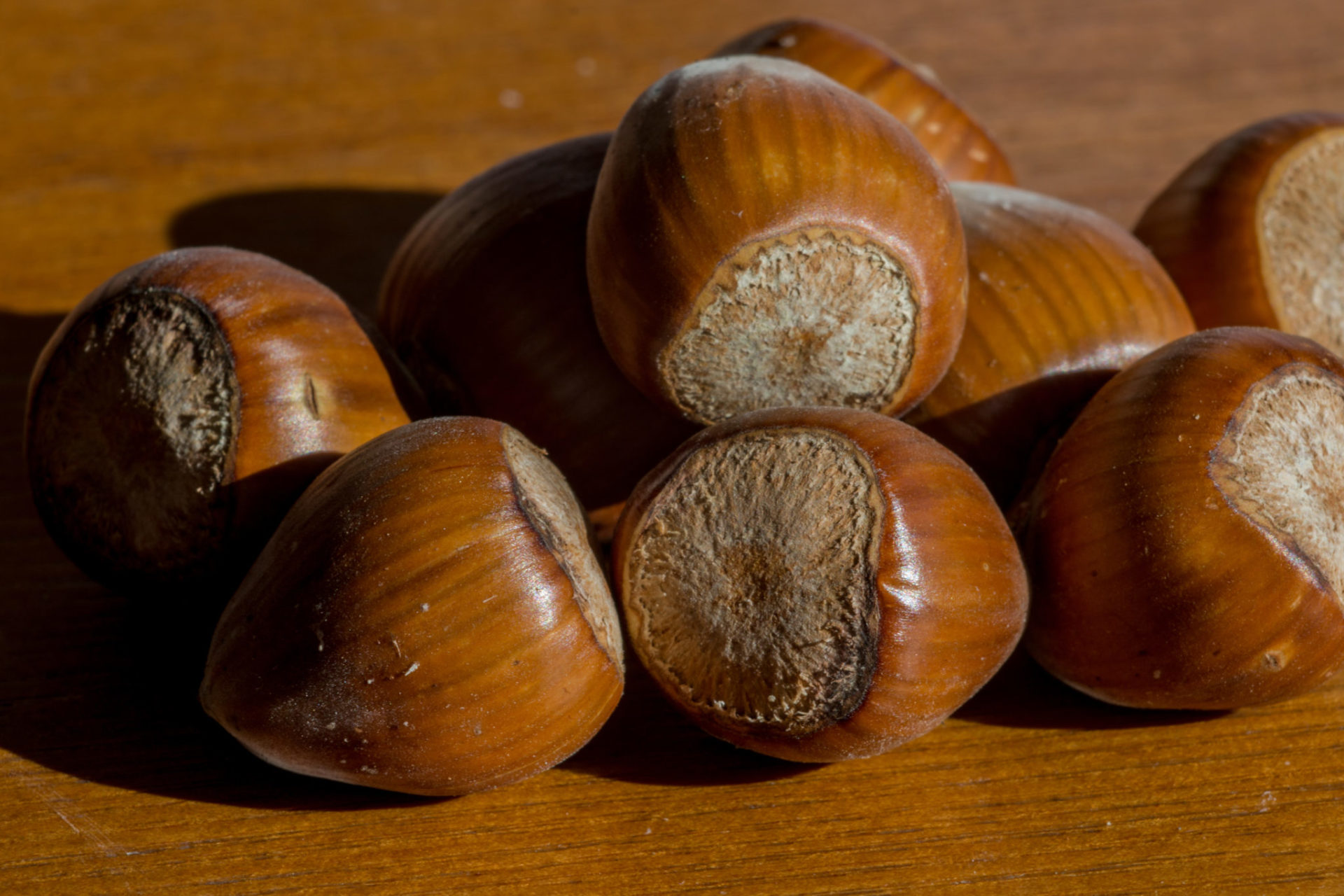The Oregon hazelnut industry is in the midst of a renaissance. After being on the brink of collapse in the wake of the Eastern Filbert Blight outbreak that decimated orchards from the late 1980s through the 2000s, the industry has battled back and is primed for a new era never seen before.
It is a brave new world for Oregon’s hazelnut growers, a group whose numbers have burgeoned in recent years. Oregon hazelnut acreage has ballooned since 2011; the industry plateaued around 30,000 acres for many years, but the advent of new varieties resistant to EFB spurred enthusiasm amongst growers—both multi-generation hazelnut growers and farmers converting from other crops in the Willamette Valley. Since 2011, the total estimated acreage in Oregon has risen from approximately 33,000 acres to nearly 85,000 acres. The industry set a single-year growth record in 2017 with an estimated 11,000 new acres of hazelnut trees.
Research and Education Drive Success
The key has been the release of new varieties. The Hazelnut Breeding Program at Oregon State University has worked arm-in-arm with growers for decades to ensure the vitality of hazelnuts in the state, and their work reached a critical new level of importance during the EFB outbreak. A team of researchers, led by Dr. Shawn Mehlenbacher, worked diligently to find a solution and discovered the Gasaway gene—the first known gene resistant to EFB.
After this discovery, the breeding program then cultivated and released varieties that have become staples in the industry. Jefferson was the first major variety released in 2009 and has been widely planted since. Other new varieties include Yamhill, Wepster, McDonald and PollyO, plus numerous pollinizers. Thanks to these releases, the industry grew more in the last 10 years than it did in the previous 100.
As with any agricultural commodity, research is eternally important to the Oregon hazelnut crop. Largely through funding provided by the Oregon Hazelnut Commission, researchers and scientists continue to seek out answers to the ever-evolving issues facing hazelnut growers. Garry Rodakowski, a grower near Vida, Ore., has been actively involved with the Oregon Hazelnut Commission, currently serves as Chairman, and has witnessed many breakthroughs made by these researchers. Combatting a new potentially dangerous pest has come to the forefront in recent years.
“A newer issue we are addressing through our research is the brown marmorated stink bug—an invasive insect species that has already caused major damage to hazelnuts in Italy and Georgia,” said Rodakowski. “Oregon State University is propagating the samurai wasp, an approved biological control, and distributing the wasp to growers throughout the Willamette Valley. The wasps feed on the eggs of the stink bug.”
Education has proven paramount for the slew of new growers entering the fray. Not long ago, Jason Perrott was one of those new growers entering the field after never previously working with hazelnuts; today, he is the president of the Nut Growers Society of Oregon, Washington and British Columbia—a grower-led group focused on strengthening the industry through grower-to-grower collaboration. Perrott is excited about the horizon awaiting Oregon hazelnuts.
“We have a dedicated group of growers, processors, and researchers that are working together as we continue to grow into what could be our largest crop ever. Oregon hazelnuts continue to have a reputation as a premium flavor nut on the world stage. Our cultural practices, research and stewardship programs are all on track and moving in positive directions. We are focusing more on marketing which will be a real positive for the growers,” said Perrott.

Preparing for Larger Crops
More trees being put into the ground mean more nuts entering the marketplace. Hazelnut trees typically take five years to reach full maturity and produce a harvestable amount of nuts, thus most new plantings are just now hitting their productive life. In 2018, the industry set an annual production record of nearly 52,000 tons. With so many new trees expected to have their first harvest in 2020, growers are optimistic that that record could be broken—and the upward trend can continue.
These new volumes mean more work for the hazelnut handlers. These companies purchase the hazelnuts from the growers and process them before selling them into the various food and consumer sectors. Denfeld Packing has been processing hazelnuts since the early 1980s, and Sean Denfeld has spent his whole life in the industry. He sees this new era as an opportunity for innovation.
“I think we are getting close to the critical mass point for the industry—the point where we are going to look at doing things a little differently. It’s an exciting time for creativity and each handler is looking for ways to be efficient as they prepare to take on unseen volumes of hazelnuts,” said Denfeld.
In the eyes of consumers, all nuts have steadily been growing in popularity, and hazelnuts are no exception. Confections continue to be a driving sector for hazelnuts, with companies like Ferrero featuring hazelnuts in their popular chocolates. Hazelnut butter has also been a surging niche. In addition to the widely recognized Nutella, many other companies, like Eliot’s Nut Butters, Ground Up and Wild Friends, have launched hazelnut butter products. From beers to protein/energy bars to milk alternatives, hazelnuts are finding a place in more and more aisles of the grocery store.
While the overall recent growth has been great, growers don’t anticipate much of a slowdown. Rather, they advocate for responsible growth. Growers and handlers see a bright future for hazelnuts in Oregon, and critical to that future will be proactively addressing pest issues as they arise, managing natural resources responsibly and a united marketing effort to ensure there are sales channels available for the thousands of new tons that will be entering the market.












